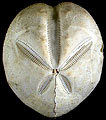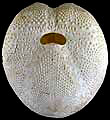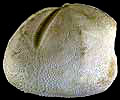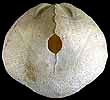The Echinoid Directory
Paraster Pomel, 1869, p. 14
[=Prymnaster Koehler, 1914, p. 187, type species P. angulatus Koehler, 1914, p. 187; =Rotundaster Lambert & Thiery, 1925, p. 526, type species Schizaster foveatus Agassiz, 1889. ]
| Diagnostic Features |
|
|---|---|
| Distribution |
|
| Name gender | masculine |
| Type | Schizaster gibberulus L. Agassiz, 1847, p. 128, by original designation. |
| Species Included |
|
| Classification and/or Status |
|
| Remarks |
|



